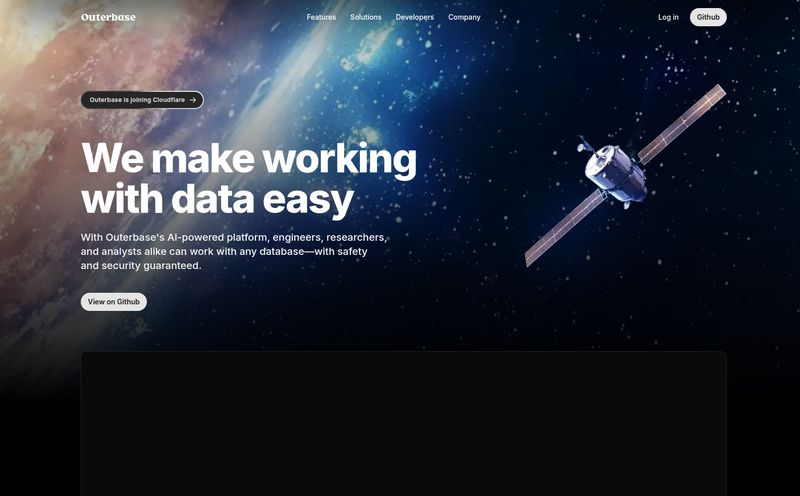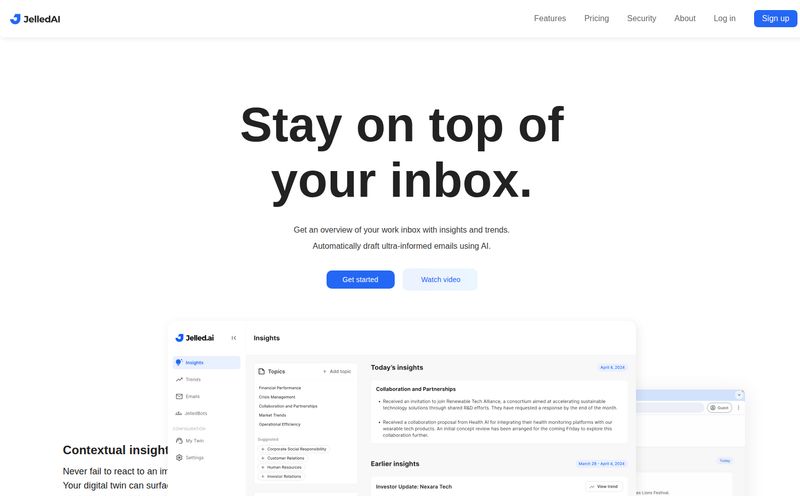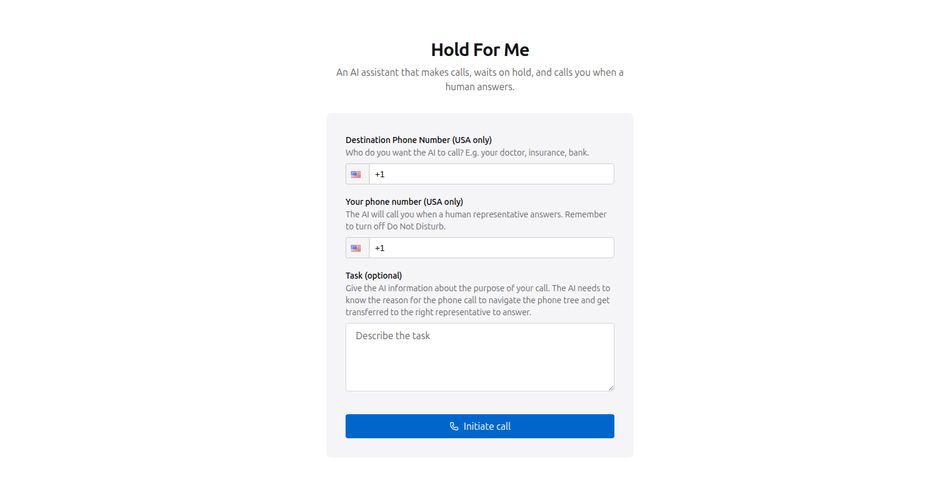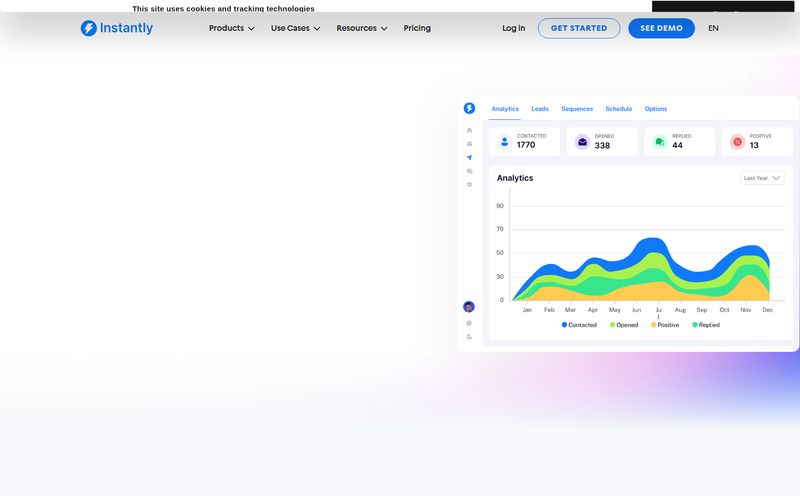We’ve all been there. You're trying to get a new sales process running, a marketing campaign tracked, or just a simple report pulled, and you run face-first into the Great Wall of Salesforce. It’s a magnificent tool, a true titan of the CRM world, but my god, it can be an infuriatingly complex beast to tame. I remember one project where a simple change to a lead assignment rule took three weeks, two developers, and more meetings than I care to admit. It’s the kind of experience that makes you want to just go back to spreadsheets. Almost.
So when I stumble across a tool that boldly claims to be “A Salesforce Admin in your Keyboard,” my ears perk up. That's the promise of Swantide, an AI-powered RevOps assistant that’s been making some noise, especially in startup circles. The idea? To give you the power to manage, customize, and automate your Salesforce instance without needing a degree in computer science or a full-time Salesforce engineer on payroll. It’s a big promise. Let's see if they deliver.
What Exactly is Swantide, Anyway?
Think of Swantide as a translator or a co-pilot for Salesforce. It sits between you and the complex backend of your CRM, letting you make powerful changes by, well, just asking for them. It’s built on the idea that the people who actually need the changes—the sales leaders, the marketing ops folks, the founders—should be able to implement them quickly. No more filing a ticket and waiting two weeks for a simple field update.
It’s primarily aimed at startups and growing companies who have the ambition (and the budget for Salesforce) but maybe not the a dedicated six-figure RevOps team to babysit it. Swantide steps in to bridge that gap, aiming to be the fastest and most cost-effective way to get your CRM working for you, not against you.
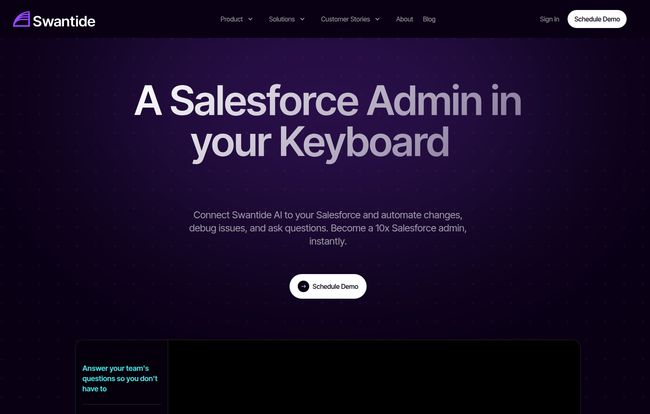
Visit Swantide
How Swantide Works: The Three-Step Dance
The beauty of a tool like this should be its simplicity, and on the surface, Swantide seems to get it. Their process is refreshingly straightforward:
- Connect your Salesforce. This is the handshake. You grant Swantide secure access to your instance, which allows it to see your setup and get to work. Standard stuff for any integrated app.
- Provide additional context. You can upload process documents, problem descriptions, or even just notes on what you're trying to achieve. This feeds the AI, giving it the specific knowledge of your business it needs to make smart recommendations.
- Start asking questions. This is where the magic is supposed to happen. You can ask things like, “Why are leads from our webinar not being assigned to the BDR team?” or “Set up a workflow to notify an account owner when a key contact leaves their company.” The AI assistant then proposes solutions or even directly implements the changes.
It sounds almost too easy, right? That’s kind of the point.
The Features That Actually Matter
A flashy homepage is one thing, but the rubber meets the road in the features. After digging in, a few things really stand out.
The AI Assistant (They Call it Corduroy)
This is the core of the platform. The AI, which they’ve affectionately named Corduroy, is your go-to for troubleshooting and building. Instead of hunting through obscure Salesforce forums (we’ve all lost hours there), you can ask it directly. The goal is for it to not only find the problem but also to suggest the fix, turning complex diagnostics into a simple conversation. This is the “admin in your keyboard” part, and it's a powerful concept.
Workflow Templates and Automation
Building automation in Salesforce can feel like assembling IKEA furniture in the dark. Swantide offers pre-built templates for common workflows—things like lead routing, opportunity stage updates, and data hygiene rules. This means you can deploy a best-practice process with a few clicks instead of building it from scratch. For a team that needs to move fast, this is huge. It lowers the barrier to entry for creating a truly efficient, automated system.
Documentation That Doesn't Suck
Okay, this one got me excited. One of the biggest silent killers of a good CRM setup is the lack of documentation. Why was this validation rule created? Who decided on this object structure? Six months later, nobody knows, and the whole thing becomes a fragile house of cards. Swantide automatically documents the what and the why of the changes it helps you make. It creates a living, breathing record of your CRM’s evolution. Honestly, this feature alone could save a future RevOps hire weeks of painful archaeology.
The Good, The Bad, and The AI-Powered
No tool is perfect, and it's important to look at this with a critical eye. So lets talk about the real-world pros and cons.
The upsides are pretty clear. Speed is the big one. The testimonials on their site talk about implementing changes that would normally take weeks or months in just a few days. That’s not just a convenience; for a startup, that’s a competitive advantage. It's the difference between building with pre-fabricated walls and mixing the concrete yourself. Then there's the cost-effectiveness. A good Salesforce consultant or engineer is expensive. Very expensive. Swantide positions itself as a way to get that expertise without the hefty salary, which is music to any founder's ears. And of course, the whole thing is no-code, which democratizes the management of the CRM.
But what about the potential hangups? For one, you’re creating a reliance on the Swantide platform. If your whole team gets used to managing Salesforce through Swantide, you're pretty locked into their ecosystem. That's a standard trade-off with any SaaS tool, but it's something to be aware of. There’s also likely a learning curve. While it's simpler than native Salesforce, it's still a new interface with its own logic. Finally, and this is the big question for any AI tool in 2024, its effectiveness hinges on the quality of its AI. If the recommendations are generic or slightly off, it could cause more problems than it solves. The entire value proposition rests on the AI being genuinely smart, and that's something you can only really test by trying it yourself.
So, What's the Price Tag?
This is the million-dollar question, isn't it? As of writing this, Swantide doesn't have a public pricing page. The main call to action on their site is “Schedule a Demo.” In the SaaS world, this usually means one of two things: the pricing is either complex and tailored to each customer (based on CRM size, usage, etc.), or it's aimed squarely at the enterprise level and they want to qualify you before talking numbers. I even tried to find a pricing URL and, amusingly, hit a 'Page Not Found' error—a rite of passage for any digital marketer.
So, no, I can't give you a neat little table with pricing tiers. You'll have to book that demo. But the messaging around being a more cost-effective solution than hiring an in-house engineer suggests they are positioning their value against a $150k+ salary, which gives you a ballpark for the kind of problem they're solving.
Who is Swantide Really For?
I don't think this tool is for everyone. If you're a massive enterprise with a team of 20 Salesforce developers, you probably have your own complex CI/CD pipelines and internal processes. But for a specific, and very large, segment of the market, this could be a game-changer.
I see the sweet spot as:
- Startups and Scale-ups that are growing fast and feeling the pain of a disorganized or under-utilized Salesforce instance.
- Sales and Marketing Leaders at mid-sized companies who don't have a dedicated RevOps person and are tired of being bottlenecked by IT.
- Companies inheriting a messy CRM. You know the one—the digital attic filled with five years of random fields, broken workflows, and questionable data from a bygone era. Swantide could be the cleanup crew.
My Final Verdict: Is Swantide Worth the Hype?
I'm cautiously optimistic. The problem Swantide is tackling is very real, very painful, and very expensive. Salesforce is the sun in the sales-tech solar system, but getting too close can burn you. Tools that provide a layer of abstraction and intelligence on top of it are, in my opinion, the future of RevOps.
Swantide feels like a smart evolution from simple automation tools to a true AI-powered partner. It’s not just about connecting apps; it's about providing diagnostics, recommendations, and documentation. That’s a higher level of value. Of course, it all comes down to execution. The AI has to be sharp, and the user experience has to be smooth. But the promise is there. If you’re drowning in Salesforce complexity and don’t have the budget for a dedicated admin, scheduling that demo might just be the most productive thing you do all week.
Frequently Asked Questions about Swantide
Do I need to know how to code to use Swantide?
Nope. That's one of its main selling points. Swantide is a no-code platform designed for non-technical users like marketers, salespeople, and founders to manage their CRM by asking questions in plain English.
Is Swantide a full replacement for a Salesforce Administrator?
For some smaller companies, it might be. For larger ones, it's probably better viewed as a force multiplier for an existing admin or RevOps team. It can handle the common, time-consuming tasks, freeing up human experts to focus on higher-level strategy and more complex architectural challenges.
What makes Swantide different from other Salesforce apps on the AppExchange?
Many Salesforce apps are designed to solve one specific problem (e.g., a better data import tool, a specific integration). Swantide is more holistic. It's an AI assistant designed to help with a wide range of tasks, from troubleshooting and building workflows to documenting your entire setup. It's less of a point solution and more of a management layer.
How does the Swantide AI actually work?
Based on their materials, you provide it with context about your business and your CRM setup. The AI (named Corduroy) then uses this knowledge, combined with its general understanding of Salesforce best practices, to interpret your questions, diagnose issues, and recommend specific, actionable solutions.
Is it safe to connect Swantide to our company's Salesforce?
While I haven't done a personal security audit, any platform that integrates with a major CRM like Salesforce must adhere to strict security protocols. They would use secure, authenticated connections (like OAuth) and would have to comply with Salesforce's own security standards to be a viable product. You should always confirm their specific security practices during the demo process.
How much does Swantide cost?
Swantide does not list pricing publicly on its website. To get pricing information, you need to contact their sales team and schedule a demo, which suggests a customized pricing model based on your company's specific needs and scale.
Conclusion
The days of needing to be a hardcore developer to wrangle your CRM are numbered. The rise of AI assistants like Swantide is a trend I'm watching closely, and it's an exciting one. It represents a shift toward more accessible, intelligent, and agile operations. While Salesforce will always be a complex system at its core, tools like Swantide are providing a much-needed bridge for the rest of us. It’s a compelling solution to a frustratingly common problem, and for many growing businesses, it might just be the relief they've been looking for.
Reference and Sources
- Swantide Official Website
- TechCrunch: Swantide aims to automate the most painful parts of Salesforce setup
